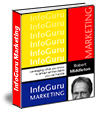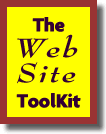| Pivotal Points Home | Personal success | Marketing |
|
by Loren McDonald 1. Get relevant – dive into personalization and segmentation. The greatest capability of email marketing technology – segmentation and personalization – is likely the most underutilized by most companies. Making your emails as relevant as possible to each recipient is the most critical "must do" in 2006. Your emails are competing for attention with an increasing number of messages in your subscribers’ inbox. The emails that resonate most, through personalized subject lines, offers, articles, products showcased, and follow-up emails based on recipient activity, will be the clear winners. It is crucial that companies begin this process, even if it is simply personalizing the content of the subject line or sending modified emails to several different segments of your list. Once the process is started, companies can then work toward the promised land of dynamic content and lifecycle-based messaging. 2. Resolve or minimize deliverability and rendering issues. Marketers must send pre-campaign test messages to uncover delivery problems before sending the actual message to recipients and monitor results after each message to spot ISP blocking, filtering and blacklisting. They should test their email messages in different email clients (Outlook, Lotus Notes, AOL , and Web clients like Hotmail/MSN , Gmail and Yahoo!) and platforms (PC and Macintosh) and correct problems. Establish authenticity as an email sender by publishing SPF code in their DNS record. 3. Redesign email messages for the inbox and users who view them in the preview pane and block images. Marketers must redesign their emails to render properly and be easily read and acted on in a world of preview panes and blocked images. In 2006 Yahoo! Mail and Hotmail will add preview panes to their Web-based clients, adding to the significant usage of preview panes by Outlook and Lotus Notes users. Marketers should redesign email message templates to deliver maximum information in the top 2 to 4 inches and increase their creative use of HTML fonts and colors, while relying less on the use of images that ISPs or recipients' email clients might block. 4. Optimize the beginning of the email relationship. Marketers must focus special attention on the beginning of the email relationship, because the most significant decline in email performance comes two months after recipients opt in. Engage new subscribers immediately with an organized program that includes a welcome message sent out upon confirmation, followed by the current newsletter or promotion, and emails offering a set of "best-of" newsletter articles or an email-exclusive offer just for newcomers. Manage subscribers’ expectations from the start by adequately explaining the email program’s value proposition, frequency, type of content and privacy policies. 5. Get on the permission train. Marketers must review the permission practices across their Web sites and at all customer-contact points within the company. Convert any opt-out address collection (loading a subscription form with a checked box or sales offers emailed to prospects without permission) to opt-in. While not required by the CAN-SPAM Act, permission-based email is becoming the acknowledged best practice in the industry. Companies that send unsolicited email risk damaging their brand and losing customers. 6. Focus on metrics that matter. Marketers spend way too much time worrying about process-oriented metrics such as open and click-through rates. Companies need to focus more on the end goals by tracking conversion rates, revenue per email, whether specific desired actions were taken, etc. Newsletter publishers need to drill down and track which type of articles and format style motivate subscribers to click through to read more, and then adjust content and formats accordingly. Use open and click rates as indicators of trends and possible delivery and rendering issues rather than as stand-alone measures of campaign success. 7. Take better care of long-term subscribers. EmailLabs estimates that 30% to 50% of a company’s email list may be inactive, meaning that subscribers have not opened or clicked on a link over a reasonable series of messages or time period. Marketers need to wake up these dormant subscribers by trying different subject lines, frequency of mailings and new formats, sending them special offers or best of newsletters, surveying them, and getting them to update their demographic, preference and interest profiles. Marketers also need to analyze these “inactives” to uncover potential trends such as how they opted in (sweepstakes offer, free whitepaper, etc.) and their demographic profiles. 8. Maximize search with email. Search is now a dominant means to acquire customers and leads, but companies that don’t integrate their email programs with their search efforts are throwing search-engine-marketing dollars in the trash. Include an email offer as a secondary objective on the landing page. Invite visitors to opt in to a newsletter, download a whitepaper or try a product/service demo if they don't want to buy or take other desired actions. Then, use email to move subscribers along the sales lifecycle. 9. Test, test, test and improve. Things move and change quickly in email marketing. What works for a competitor or worked for you six months ago might not work today. Companies need to test variables continuously, including format, design, copy style and calls to action, subject line approach and offers, personalization, content types or product categories and more. Start with simple A/B split tests, and repeat the test at least a few times to verify results. 10. Create an email marketing plan and align resources. Do you have an actual email marketing plan with specific goals, success metrics and action steps outlined? Because email marketing is still so new to many organizations, budget and resources for the channel are often not in line with the opportunity and potential ROI. Develop a plan that clearly demonstrates to management the value and ROI of a strategic and well-run email marketing program. Make sure your plan includes enough budget and resources to enable significant improvement in ROI through increased personalization and segmentation, better deliverability, continuous testing, analysis and improvement and use of advanced technology. To sum up: Yes, it's a long list, and it probably looks pretty intimidating if you haven't developed your email program beyond batch-and-blast. But remember that a profitable email-marketing program can't be developed overnight. You can't fix an underperforming program overnight, either. If you need help getting started, you'll find plenty of advice, tips and suggestions in our Resource Center. We also will address some of these issues in upcoming issues of The Intevation Report. Stay tuned! |



